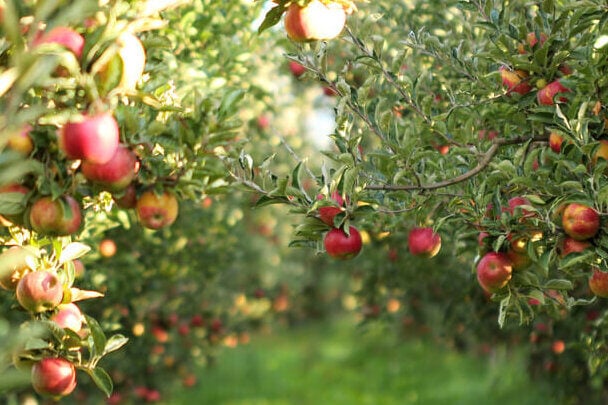How Do You Attract Bees to Your Garden for Pollination?
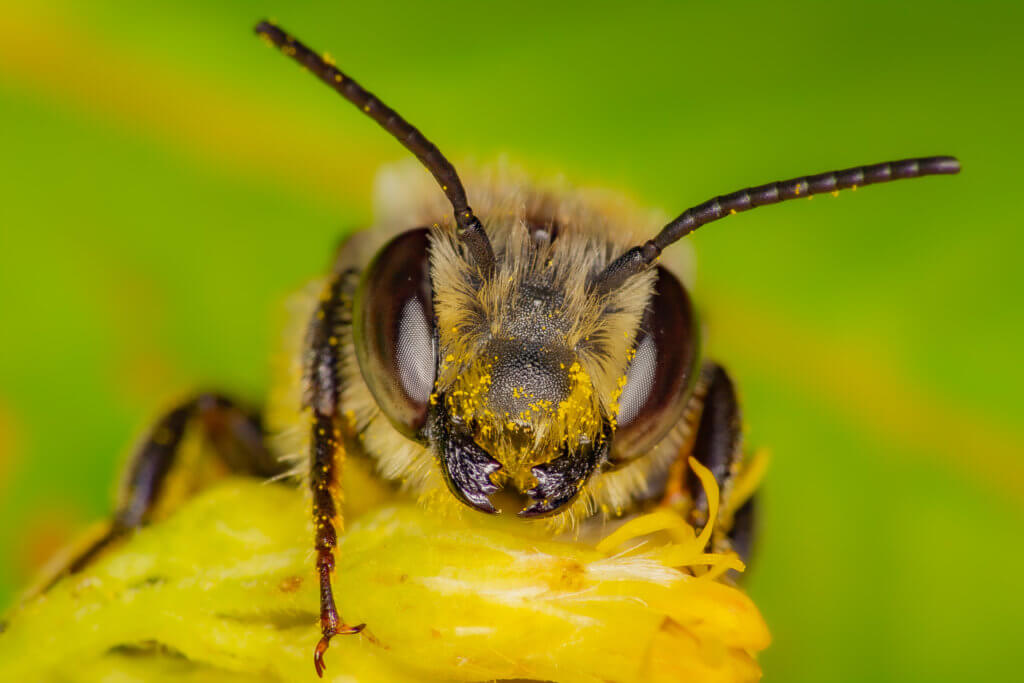
And What Are the Best Plants to Attract Bees to Your Garden?
These are two common, but sometimes difficult questions to answer for Gardeners.
But they don’t have to be!
Below, is a list of the 50 Best Plants that Attract Bees to Your Garden!
Not only this, but these plants can also be harvested for other uses!
And if you scroll further down you’ll learn How to Attract Bees to Your Garden in 10 Simple Ways!
[toc]
50 USEFUL Plants that Attract Bees
Before we review 50 USEFUL Plants that Attract Bees, it is first important to remember two important factors when finding USEFUL Plants that Attract Bees.
1. Easy to Grow Plants

You should grow plants that are meant for your hardiness zone or are native to where you live. These are typically the easier plants to grow in your location.
Find what hardiness zone you are in: USDA Plant Hardinesss Zone Finder
2. Easy to Find Plants
Buy plants at your local nursery and if you can’t find it there or on Amazon then it most likely means it will be a hard plant to find.
Spring Season Plants that Attract Bees (#1-7)
1. Blueberry Bushes
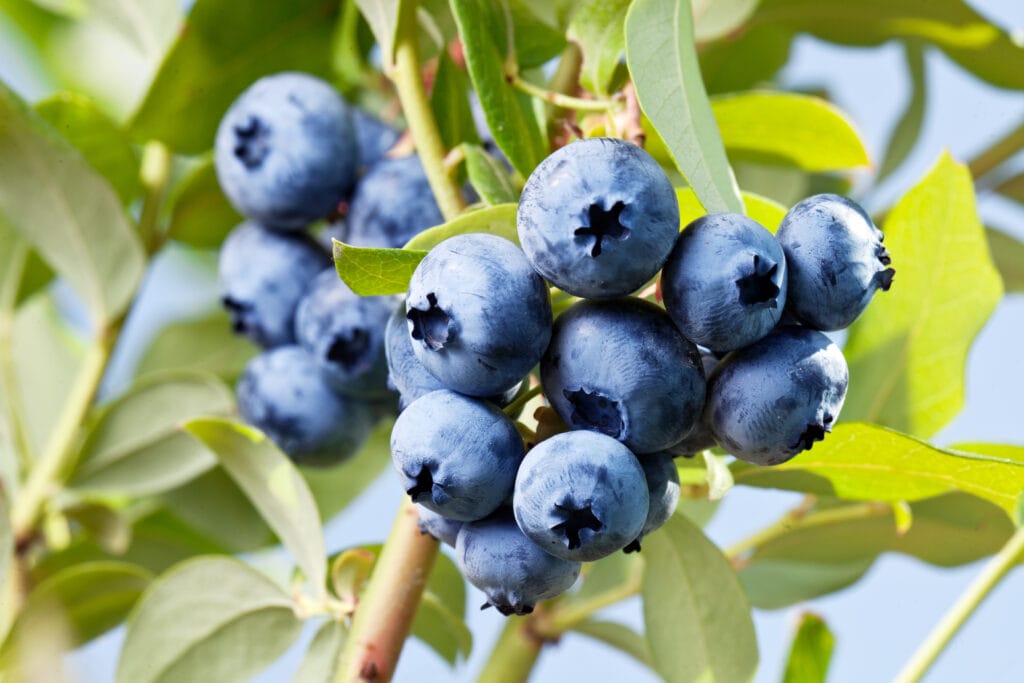
- Genus: Vaccinium
- Hardiness Zone: 4 to 10
- Life Cycle: Perennial
- Size: 6 feet x 4 feet
- Light Requirement: Full-Sun
Blueberry Bushes are a great addition to your garden.
They provide delicious and nutritious fruit every year. They are relatively easy to care for. And they are a great plant that flowers in the spring to attract bees.
And if you want to learn how to grow blueberries then I recommend watching the below video:
Blueberries grow best in:
- A loamy, well-draining soil
- Acidity pH of 5.0
- And should be watered weekly
2. Crabapple Tree
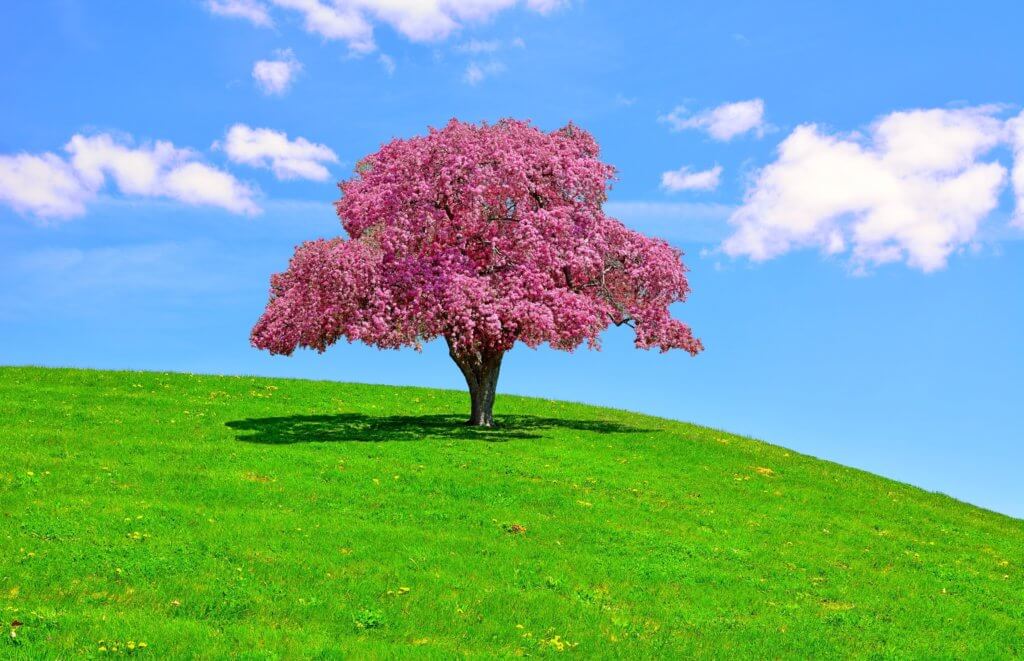
- Genus: Malus Sylvestris
- Hardiness Zone: 4 to 8
- Life Cycle: Perennial
- Size: 15 feet x 15 feet
- Light Requirement: Full-Sun
Crabapple Trees serve many purposes. When they bloom they are absolutely gorgeous. They are also great cross-pollinators for most fruit trees.
Not only this, but they can grow in a wide range of zones and soil types.
Best of all is that they are one of the best types of trees that attract bees.
Crabapples grow best in:
- A loamy, well-draining soil or Peaty soil
- Acidity pH of 6.0 to 8.0
- And should be watered Bi-Weekly
3. Hazelnut Tree
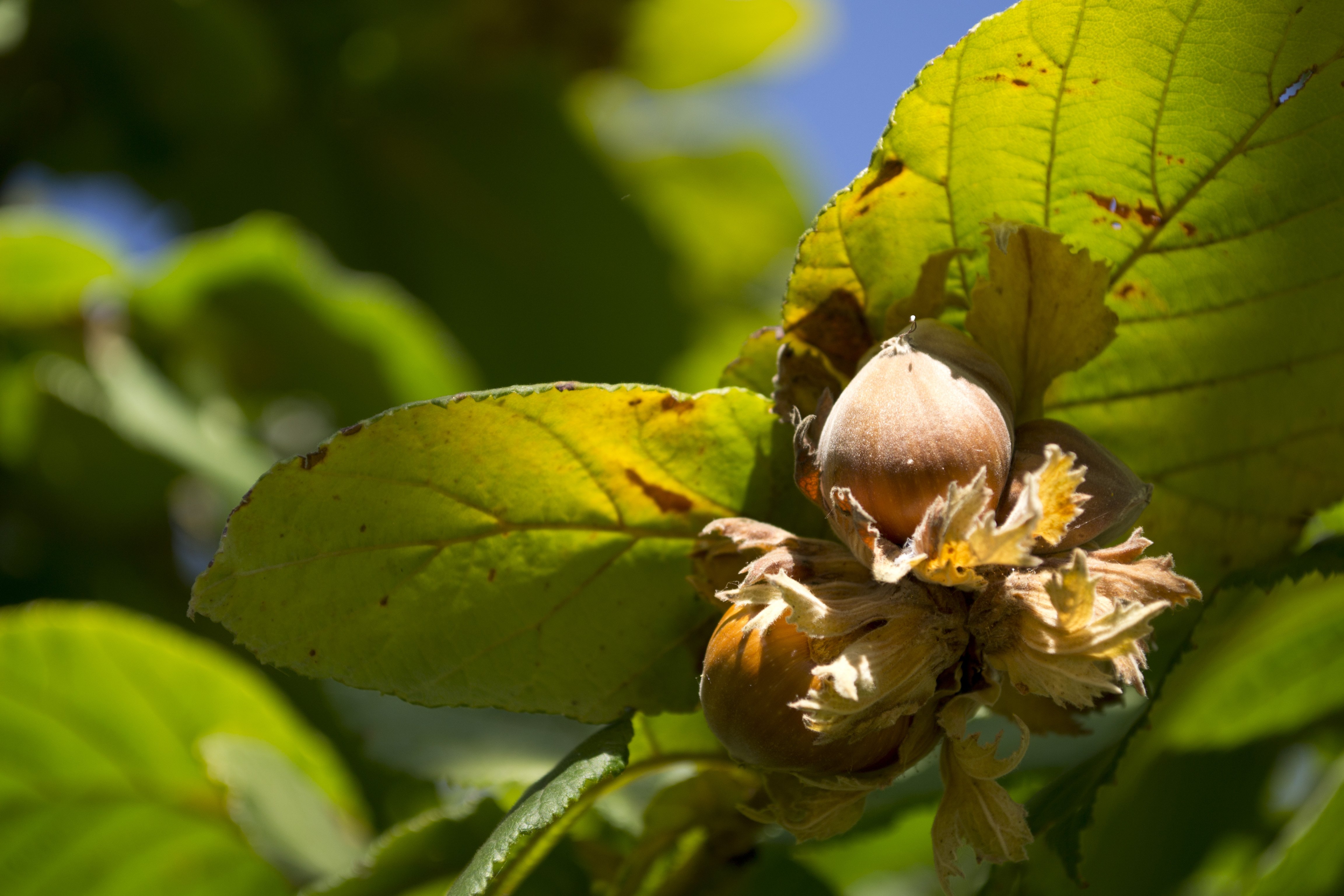
- Genus: Corylus
- Hardiness Zone: 5 to 8
- Life Cycle: Perennial
- Size: 18 feet x 18 feet
- Light Requirement: Full-Sun
Hazelnuts are the perfect, easy to grow, disease-resistant nuts for YOU!
They are great for someone looking to add to their garden landscape. They are also easy to crack and tasty nuts that look beautiful in the fall.
Best of all is that they are one of the best nuts and plants to attract bees!
Hazelnuts grow best in:
- A loamy, peaty, or silty soil
- Acidity pH of 6.0 -7.0
- And should be watered bi-weekly
4. Cranberry
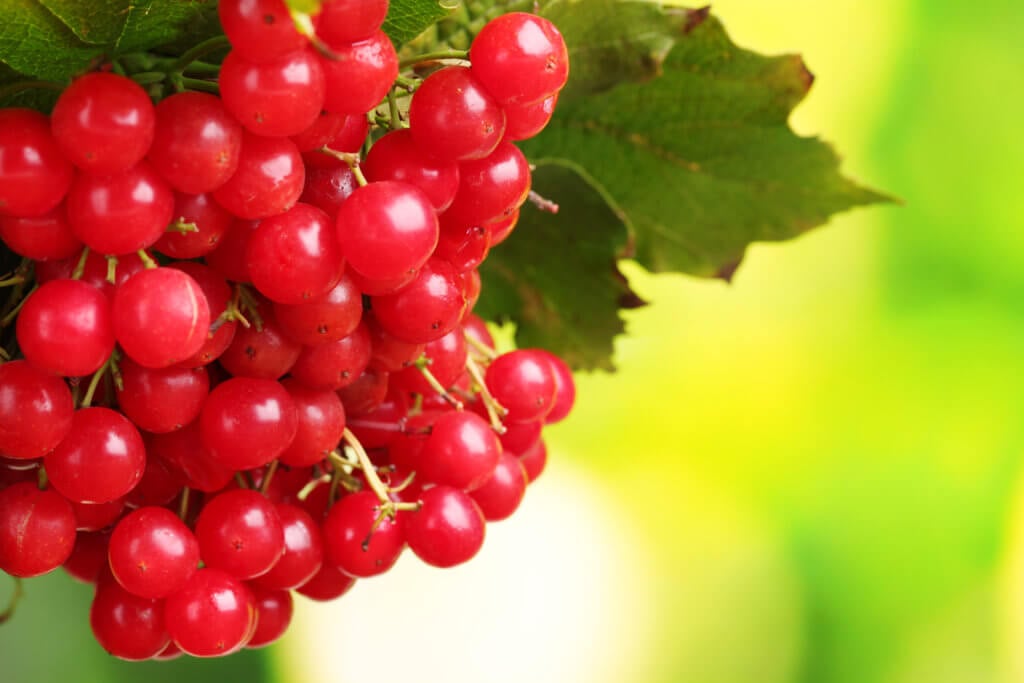
- Genus: Vaccinium Oxycoccus
- Hardiness Zone: 2 to 7
- Life Cycle: Perennial
- Size: 1 feet x 3 feet
- Light Requirement: Full-Sun
When you think of cranberries you probably think of Thanksgiving. But these shrubs are so much more!
They are an excellent ground cover that is extremely cold hardy and easy to maintain.
In addition, they are the perfect tart fruit for muffins, desserts, and other meals.
Throw in that they are a great plant that attracts bees and you can’t beat it!
Cranberries grow best in:
- A loamy, well-draining soil
- Acidity pH of 4.0-5.0
- And should be watered weekly
5. Chives
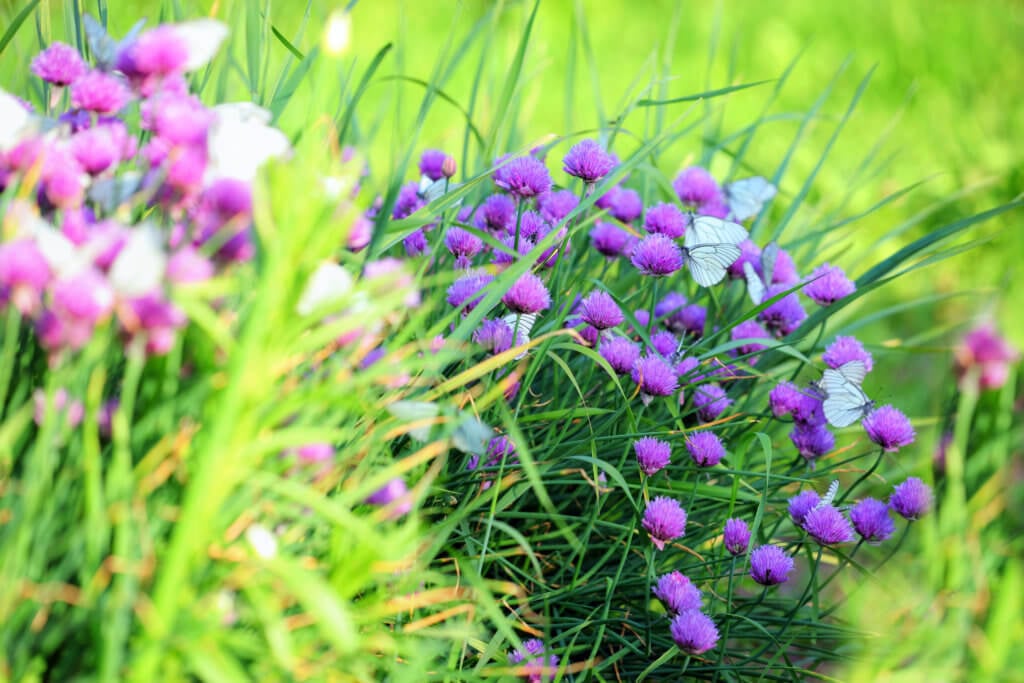
- Genus: Allium schoenoprasum
- Hardiness Zone: 3 to 7
- Life Cycle: Perennial
- Size: 1 foot x 1 foot
- Light Requirement: Partial-Sun
Chives may be one of the most underrated herbs out there.
They can be used in salads, potato dishes, sauces, omelets, and so much more!
The best part about this versatile herb though is that it is a great plant that attracts bees to your garden!
Chives grow best in:
- A loamy, well-draining soil
- Acidity pH of 6.0–7.0
- And should be watered bi-weekly
6. Rosemary

- Genus: Salvia Rosemarinus
- Hardiness Zone: 3 to 7
- Life Cycle: Perennial
- Size: 2 feet x 2 feet
- Light Requirement: Partial-Sun
An interesting fact about Rosemary. There were tales of Greek Goddesses draping it around their necks in poems and stories you once read in school.
Since we aren’t Greek Goddesses lets focus on some of its great uses. Rosemary can be used as a garnish, add flavor to many dishes, and is a perfect complement for chicken and meat.
Not only this, it is a drought-resistant herb and another great plant to attract bees to your garden.
Rosemary grows best in:
- A loamy, well-draining soil
- Acidity pH of 6.0–7.5
- And should be watered bi-weekly
7. Lilac

- Genus: Syringa
- Hardiness Zone: 3 to 7
- Life Cycle: Perennial
- Size: 15 feet x 12 feet
- Light Requirement: Partial-Sun
Lilac is one of those plants that have more uses than we know about. It is great for skin rashes, stomach problems, cuts, and sunburns.
Depending on the type of tree or bush you get it can be a beautiful part of your landscape or a nice complement to your garden.
Regardless, you cannot forget its smell when it blooms. Neither do bees. This is a favorite of bees in almost every region of the country!
Lilac grows best in:
- A loamy, well-draining soil or peaty soil
- Acidity pH of 6.5-7.0
- And should be watered monthly
Summer Season (#8-17)
8. Blackberry Bushes
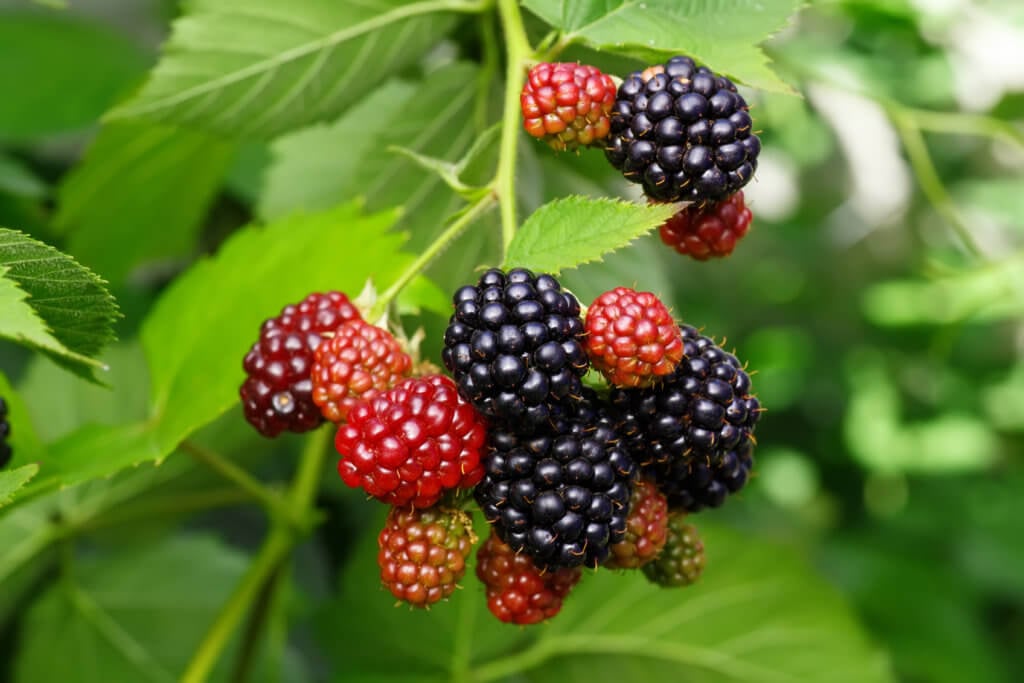
- Genus: Rubus
- Hardiness Zone: 6 to 8
- Life Cycle: Perennial
- Size: 5 feet x 4 feet
- Light Requirement: Full-Sun
Are you interested in a self-sufficient fruit plant?
Then add blackberry vines to your homestead. Blackberries are a great plant that attracts bees. In addition, it is one of the tastiest berries out there.
If you are interested in food packed with nutrition and antioxidants then this is for you!
If you want to learn how to grow blackberries then watch the below video:
Blackberries grow best in:
- A loamy, well-draining soil
- Acidity pH of 7.0
- And should be watered monthly
9. Catnip

- Genus: Nepeta Cataria
- Hardiness Zone: 4 to 8
- Life Cycle: Perennial
- Size: 2 feet x 2 feet
- Light Requirement: Partial-Sun
Catnip may be the jack of all trades when it comes to herbs.
It is used by us to help with the common cold. It has been used to repel insects. And most famously it has been used as a recreational substance by cats.
But don’t forget one of its most underrated benefits: It is a great plant to attract bees.
Catnip grows best in:
- A loamy, well-draining soil
- Acidity pH of 6.0–7.5
- And should be watered bi-weekly
10. Lavender
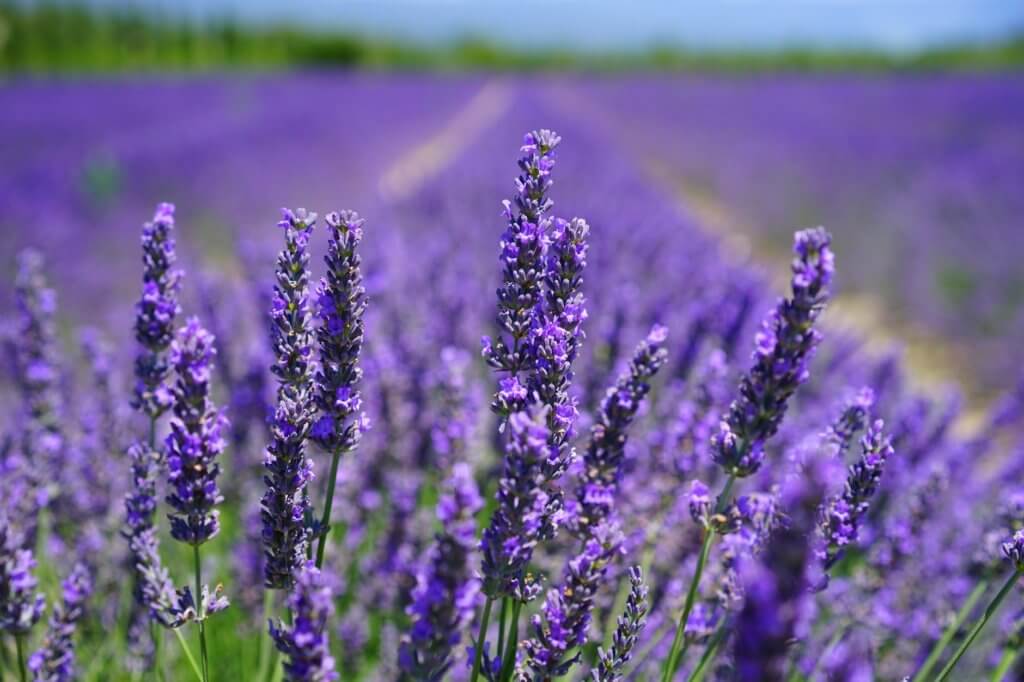
- Genus: Lavandula
- Hardiness Zone: 5 to 9
- Life Cycle: Perennial
- Size: 3 feet x 3 feet
- Light Requirement: Partial-Sun
Lavender may be my favorite plant on this list!
It smells fantastic, has so many herbal and medicinal uses, and is a great herb to add color to your garden
It is also one of the best plants that attract bees on this list!
Lavender grows best in:
- A loamy, well-draining soil
- Acidity pH of 6.0–7.5
- And should be watered bi-weekly
11. Raspberry Bushes
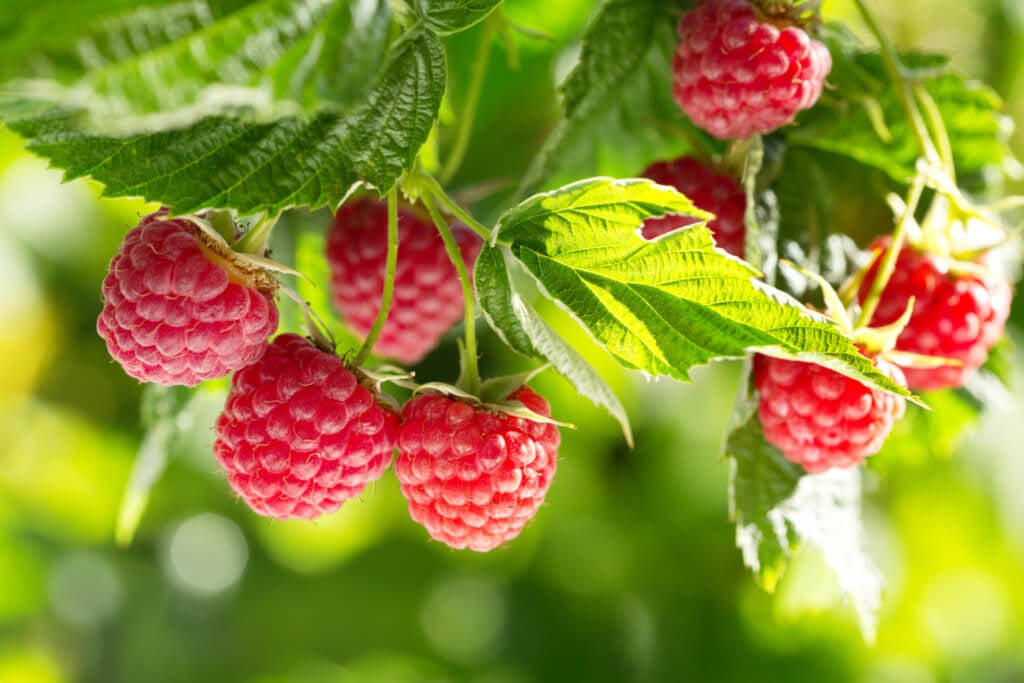
- Genus: Rubus Idaeus
- Hardiness Zone: 4 to 8
- Life Cycle: Perennial
- Size: 5 feet x 4 feet
- Light Requirement: Full-Sun
This is the last of the berry bushes on this blog. And like blueberries and blackberries, it is packed with incredible nutrients.
You can eat raspberries raw. Create sauces and syrups. And bake pies with them. Best of all they are another great plant to attract bees.
If you want to grow raspberries then I recommend viewing the below video:
Raspberries grow best in:
- A loamy, well-draining soil
- Acidity pH of 5.5-6.5
- And should be watered monthly
12. Sunflower
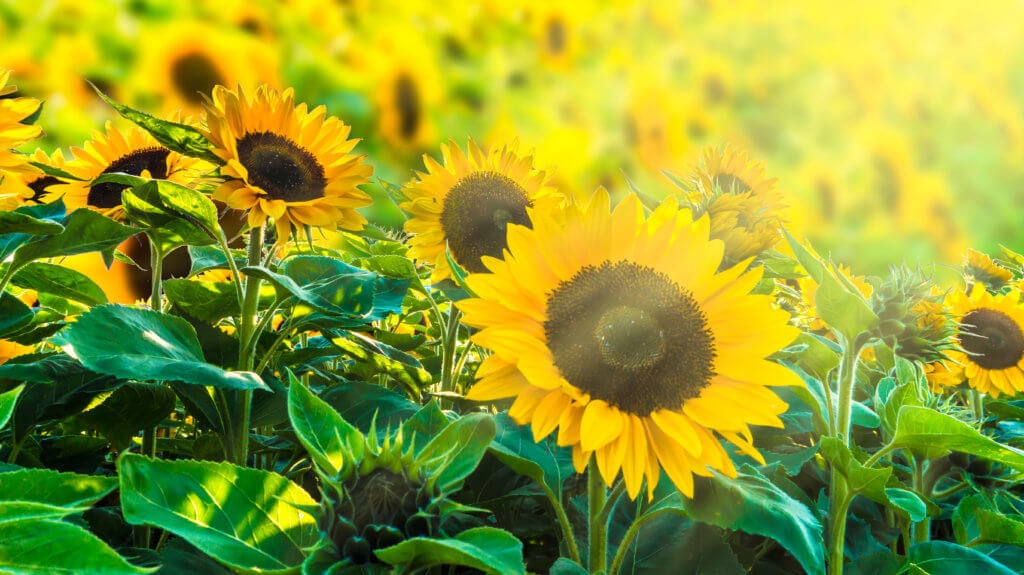
- Genus: Helianthus
- Hardiness Zone: 4 to 9
- Life Cycle: Annual
- Size: 12 feet x 1 feet
- Light Requirement: Full-Sun
Did you know there are over 70 types of sunflowers?
I’ll let you decide what type you should grow in your garden.
Like all the other plants, sunflowers provide great nutrients to us. In addition, it is a great pollinator for birds. And bees!
Sunflowers grow best in:
- A loamy, well-draining soil or peaty soil
- Acidity pH of 6.0–7.5
- And should be watered weekly
13. Mint

- Genus: Mentha
- Hardiness Zone: 4 to 9
- Life Cycle: Perennial
- Size: 2 feet x 2 feet
- Light Requirement: Partial-Sun
Did you know Mint is not only for Mint Juleps at the Kentucky Derby?
They are amazing at repelling pest while attracting beneficial insects. In addition, they are one of the few deer-resistant herbs.
They spread incredibly quickly and wide. In addition, they are used in almost all Thai dishes around the world.
- A loamy, well-draining soil
- Acidity pH of 6.5-7.0
- And should be watered monthly
- Related: How to Grow Mint
14. Thyme
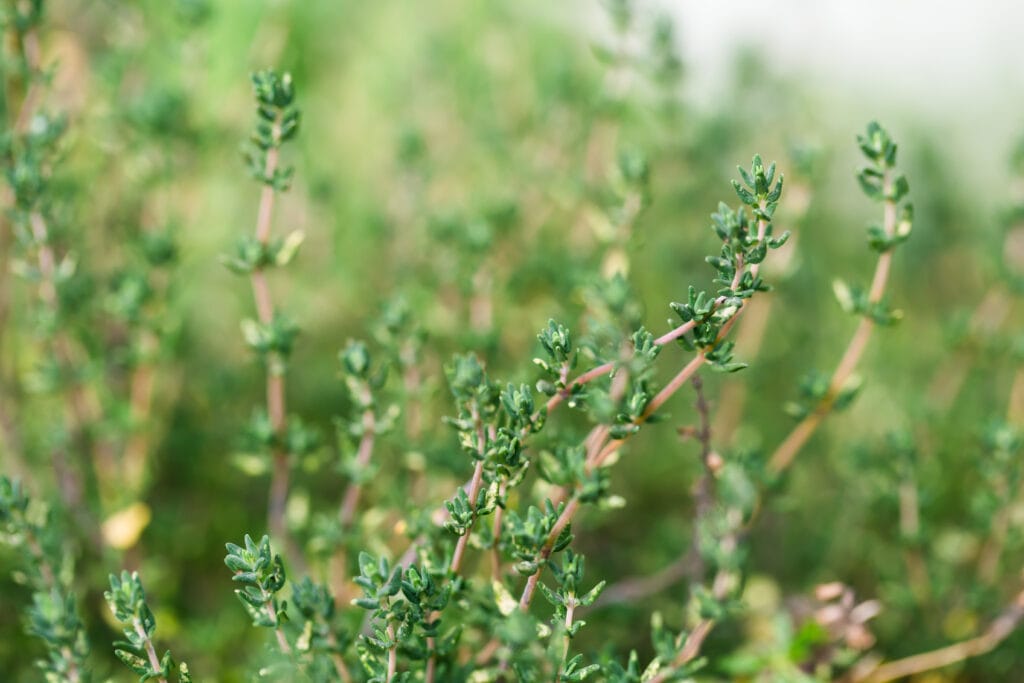
- Genus: Thymus
- Hardiness Zone: 4 to 8
- Life Cycle: Perennial
- Size: 2 feet x 2 feet
- Light Requirement: Partial-Sun
An aromatic evergreen herb that has been used throughout history. Thyme is one of the few herbs that was used as an “anti-biotic” before antibiotics were created.
In addition, Thyme can be used in many food dishes, along with tea. A distant relative of oregano and mint, it is a great plant to attract bees.
Thyme grows best in:
- A loamy, well-draining soil
- Acidity pH of 6.0–8.0
- And should be watered bi-weekly
15. Basil
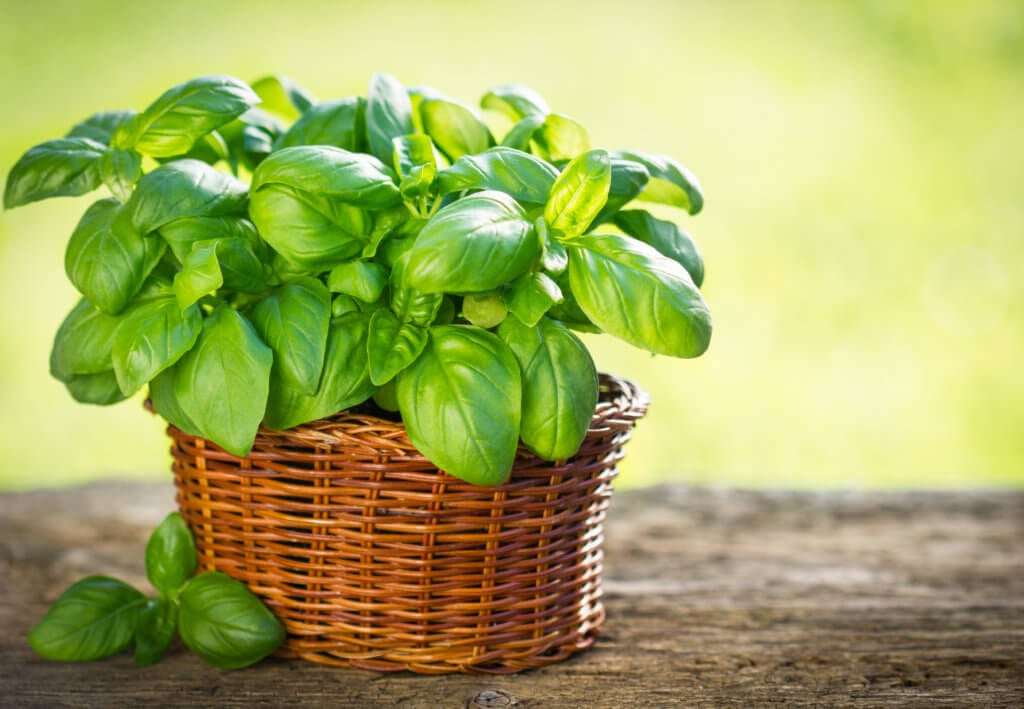
- Genus: Ocimum Basilicum
- Hardiness Zone: 4 to 8
- Life Cycle: Annual
- Size: 2 feet x 2 feet
- Light Requirement: Partial-Sun
If you have ever had pesto before then you know just how amazing Basil is.
This herb originated from Italy and has an incomparable smell. It is great for pesto, Caprese salads, and pasta.
Not only this, but it is the perfect herb to be planted in a pot. This means you can move it anywhere to attract bees to the perfect location.
Basil grows best in:
- A loamy, well-draining soil
- Acidity pH of 5.5-7.5
- And should be watered weekly
- Related: How to Grow Basil from Seed
16. Wallflower
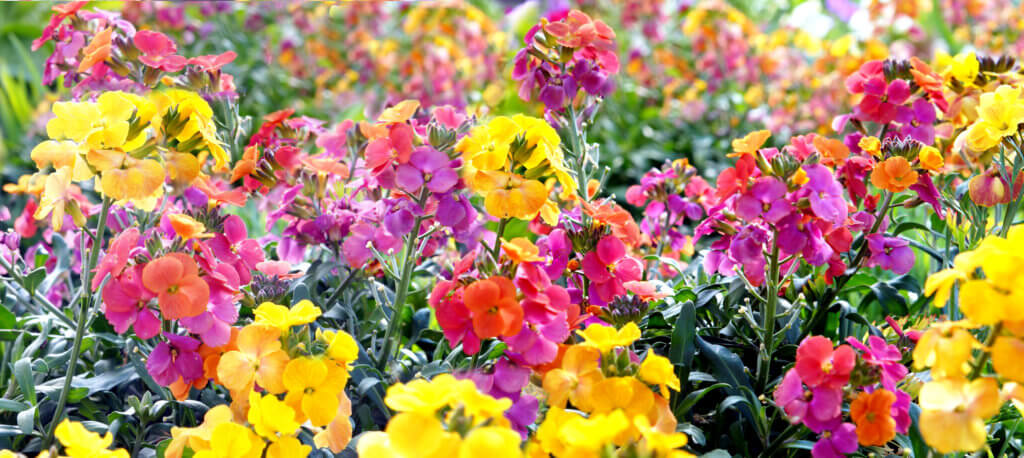
- Genus: Erysimum
- Hardiness Zone: 3 to 10
- Life Cycle: Annual
- Size: 3 feet x 2 feet
- Light Requirement: Full-Sun
Wallflower is one of those plants that few people grow and even fewer use.
But lucky for you, the garden dad has grown it and highly recommends planting.
Not only is it a great plant to attract bees, but it can be used to help with constipation, gallbladder disease, etc.
Wallflower grows best in:
- A loamy, well-draining soil
- Acidity pH of 7.0-9.0
- And should be watered monthly
17. Sage
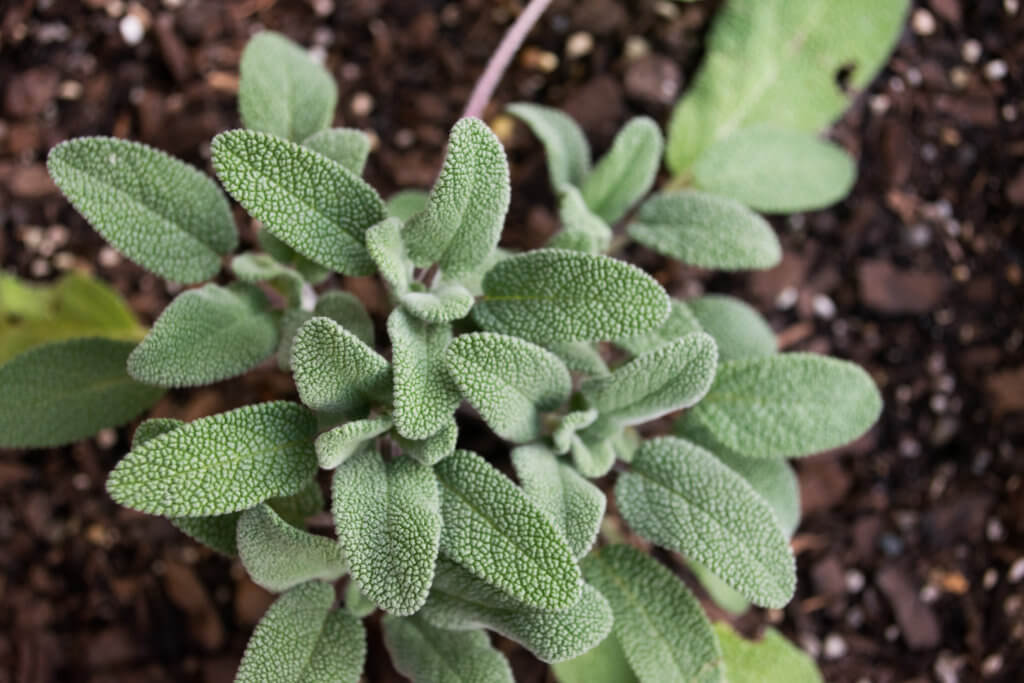
- Genus: Salvia Officinalis
- Hardiness Zone: 4 to 8
- Life Cycle: Perennial
- Size: 2 feet x 2 feet
- Light Requirement: Partial-Sun
As you can tell by now that herbs are some of the best plants to attract bees and to be used for other purposes.
Sage happens to be one of the most versatile herbs.
It is great in ravioli. Helps with stomach pain. And has even been linked to preventing memory loss.
No wonder why bees are attracted to it!
Sage grows best in:
- A loamy, well-draining soil
- Acidity pH of 6.0–7.0
- And should be watered weekly
- Related: How to Grow Sage for Beginners
Fall Season (#18-25)
18. Pumpkin

- Genus: Cucurbita
- Hardiness Zone: 4 to 8
- Life Cycle: Annual
- Size: 2 feet x 4 feet
- Light Requirement: Full-Sun
When you think of Halloween pumpkins are one of the first things that come to mind.
Pumpkins have amazing uses. Their seeds are superfoods. They can be used for the famous pumpkin pie. And they are unbelievable for attracting bees.
Pumpkins grow best in:
- A loamy, well-draining soil
- Acidity pH of 5.5-7.5
- And should be watered weekly
19. Squash
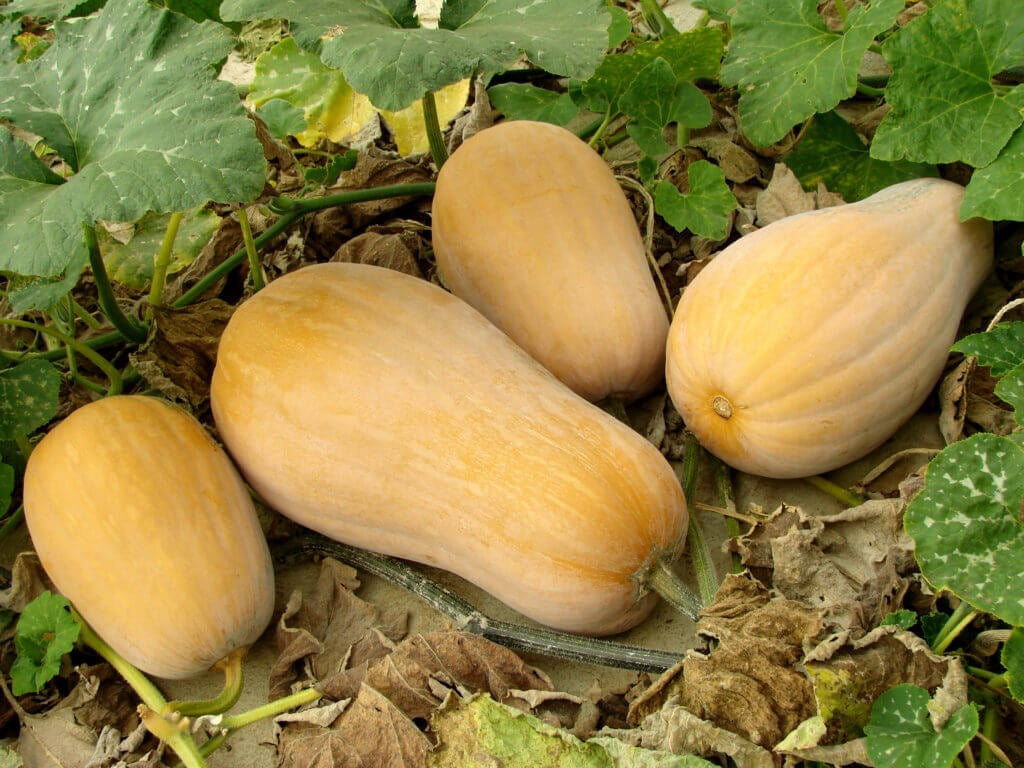
- Genus: Cucurbita
- Hardiness Zone: 4 to 8
- Life Cycle: Annual
- Size: 1 feet x 2 feet
- Light Requirement: Full-Sun
Pumpkins and squash are part of the same food group. Yet they have different uses and can attract different types of bees.
This may not be news to you. But do you want to know something most gardeners don’t?
Plant these by each other and you have a much greater chance of attracting MORE and DIFFERENT types of bees.
Squash grow best in:
- A loamy, well-draining soil
- Acidity pH of 7.0
- And should be watered weekly
20. Aster
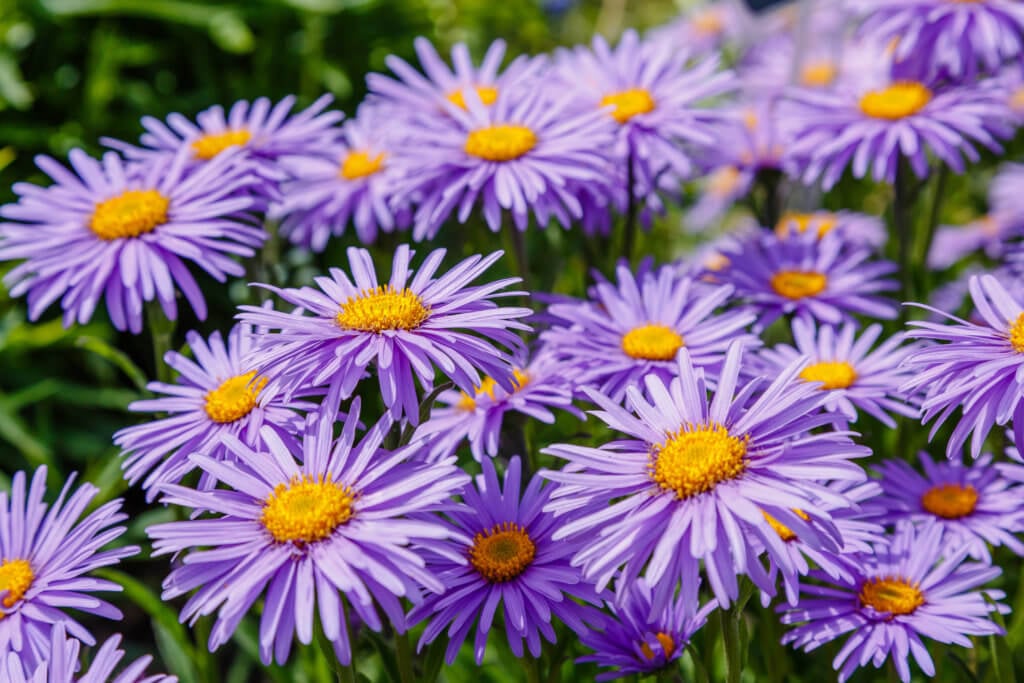
- Genus: Asteraceae
- Hardiness Zone: 3 to 8
- Life Cycle: Perennial
- Size: 6 feet x 4 feet
- Light Requirement: Full-Sun
This is one beautiful flower that blooms late.
It can be used for stomach pains, fever, and earaches. Not only this but it great true flower for attracting bees to your garden.
Aster Grows best in:
- A loamy, well-draining soil
- Acidity pH of 5.5-6.5
- And should be watered monthly
21. Goldenrod
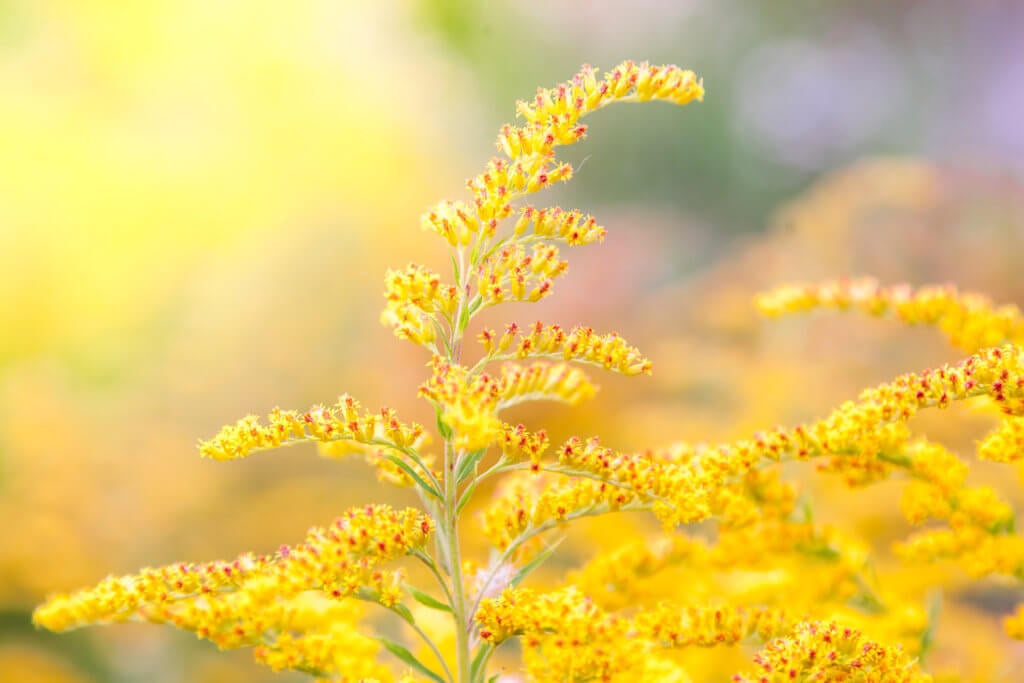
- Genus: Solidago
- Hardiness Zone: 4 to 9
- Life Cycle: Perennial
- Size: 10 feet x 2 feet
- Light Requirement: Full-Sun
Have you ever had a kidney stone? I have been told it is worse than child birth.
Goldenrods can be used to help prevent kidney stones. In addition, they have a great smell and are a beautiful flower.
Just one of many reasons why bees are attracted to them and you should plant them.
Goldenrod grows best in:
- A loamy, well-draining soil
- Acidity pH of 5.5-7.5
- And should be watered monthly
22. Cornflower
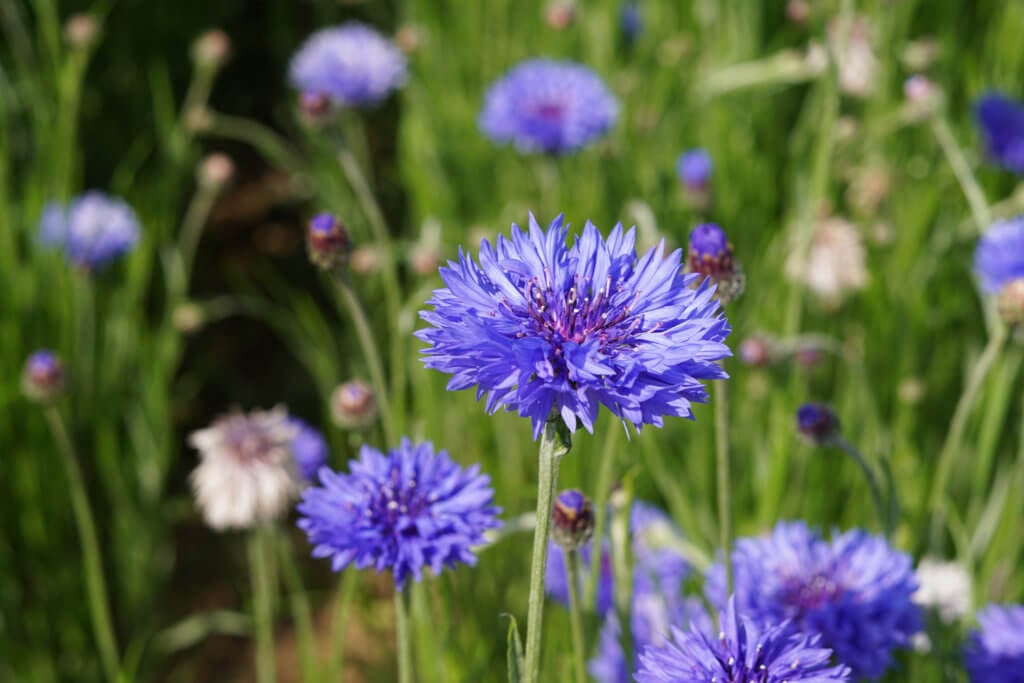
- Genus: Knapweeds
- Hardiness Zone: 2 to 10
- Life Cycle: Perennial or Annual
- Size: 1 foot x 1 foot
- Light Requirement: Full-Sun
If you haven’t heard of cornflower you aren’t alone.
But this is one of those flowers you HAVE to plant.
Beautiful blue-ish, purple colors that can be used as a stimulant in tea. In addition, it is just another flower that attracts bees.
Cornflower grows best in:
- A loamy, well-draining soil
- Acidity pH of Any
- And should be watered monthly
23. Buckwheat
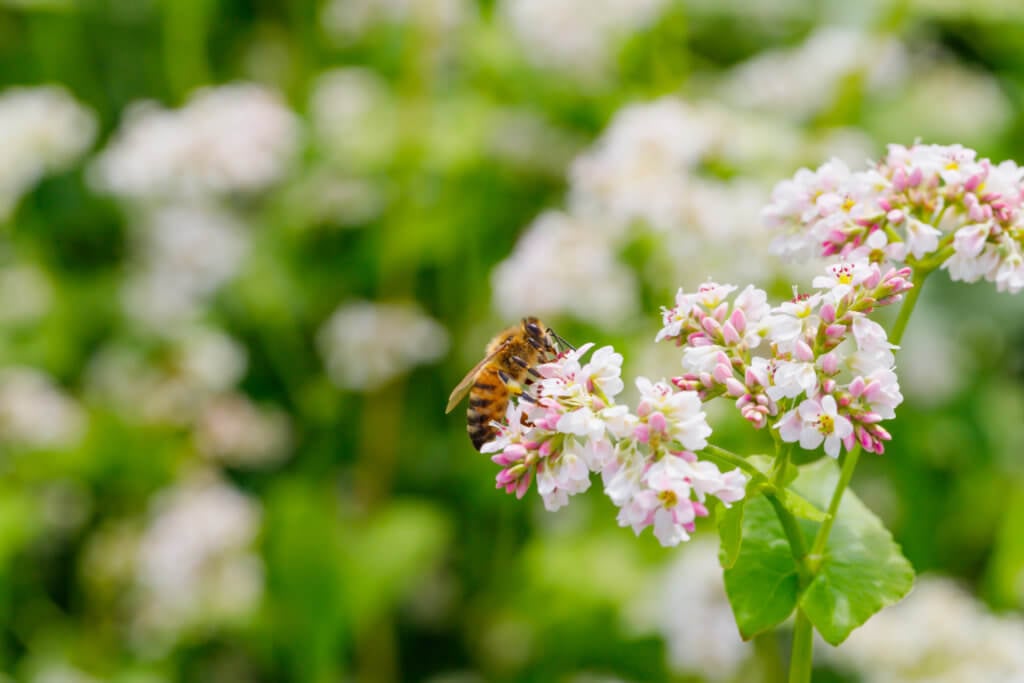
- Genus: Fagopyrum
- Hardiness Zone: 7 to 10
- Life Cycle: Annual
- Size: 4 feet x 2 feet
- Light Requirement: Full-Sun
Buckwheat. It’s used for flour, pancakes, bread, etc.
But did you know that it is actually a flower that attracts bees?
And it can be used to help improve circulation?
This is a great flower if you are interested in diversifying your garden.
If you are interested in further diversifying your gardening skills I highly recommend reading one of the many books available on Amazon.
Buckwheat grows best in:
- A loamy, well-draining soil
- Acidity pH of 4.5
- And should be watered monthly
24. Hyssop
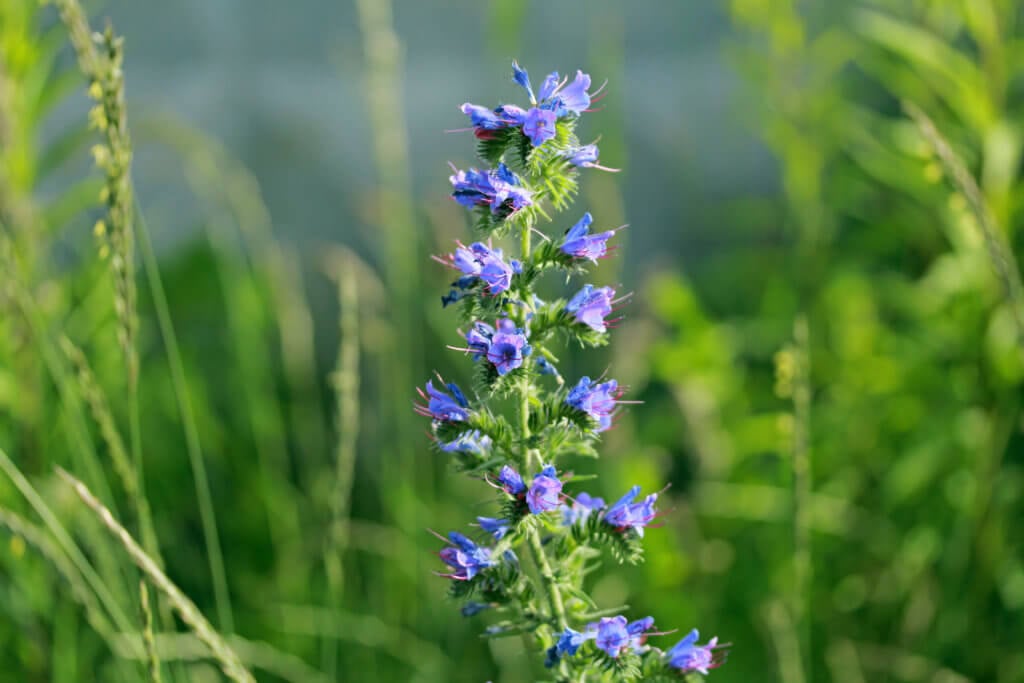
- Genus: Hyssopus
- Hardiness Zone: 3 to 9
- Life Cycle: Perennial
- Size: 1 foot x 1 foot
- Light Requirement: Full-Sun
A lot of gardeners sometimes mistake hyssop for lavender.
While they look the same and have some similar uses Hyssop is a great addition to planting lavender.
It can attract a variety of bees and again can be used as a home remedy for numerous illnesses.
Hyssop grows best in:
- A loamy, well-draining soil
- Acidity pH of 6.0-7.0
- And should be watered monthly
25. Cilantro

- Genus: Coriandrum
- Hardiness Zone: 3 to 8
- Life Cycle: Annual
- Size: 1 foot x 1 foot
- Light Requirement: Partial-Sun
Cilantro is great for salsa. It can add a kick for olive oil. And is a great way to add flavor to salads and pasta.
In addition, it is a great complement to a herb garden. And even better it can attract certain types of bees that other herbs cannot.
Cilantro grows best in:
- A loamy, well-draining soil
- Acidity pH of 6.0–8.0
- And should be watered weekly
- Related: How to Grow Cilantro from Seed
25 MORE Plants that Attract Bees
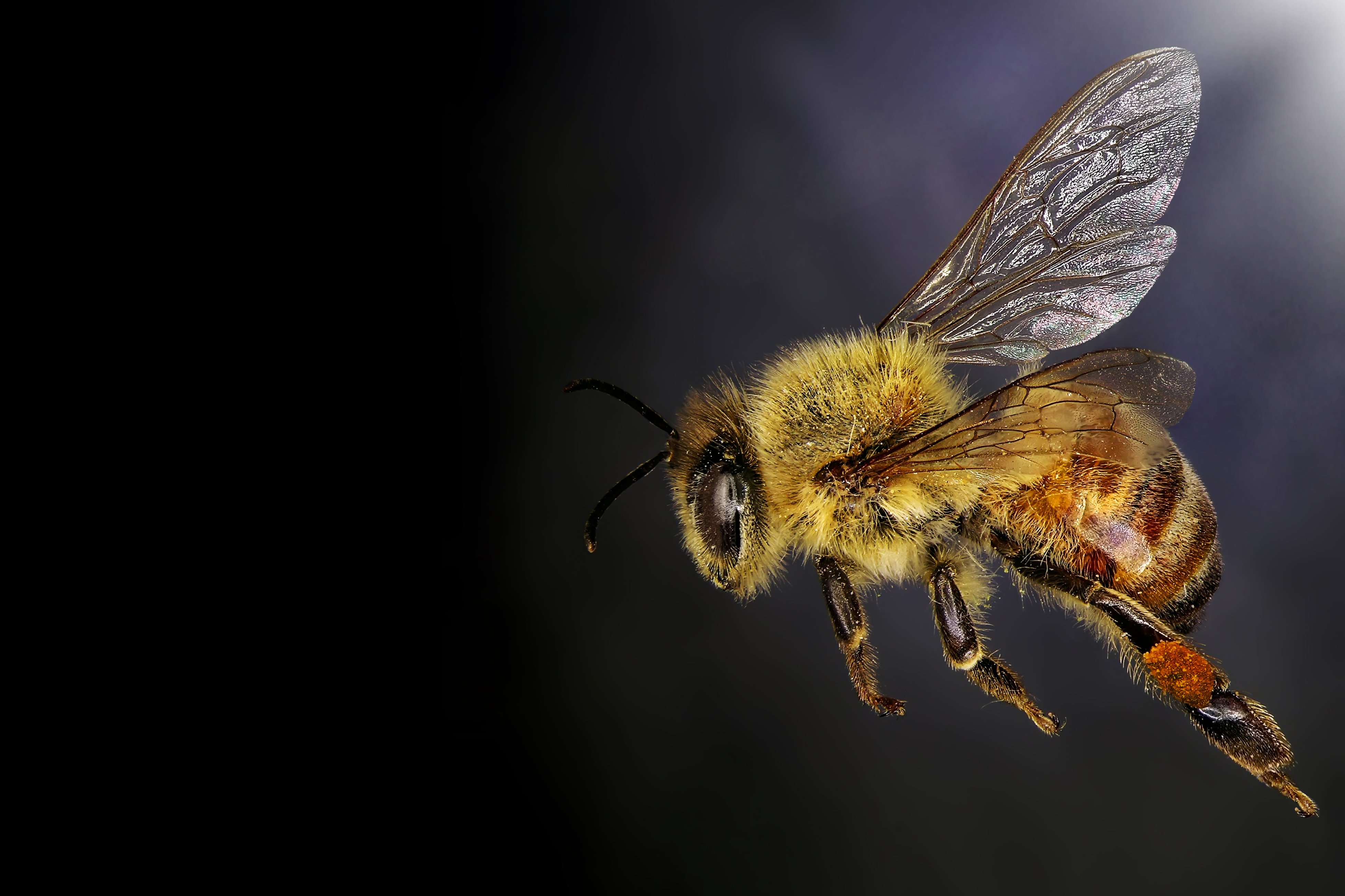
Below, are 25 more plants and flowers that attract bees.
These plants do a great job of attracting bees to the garden.
It should be noted these plants and flowers are not as useful as the first 25 on the list and may not be native to your hardiness zone.
27. Caltrop
28. Creosote Bush
29. Currant
30. Elderberry
31. Huckelberry
32.Joe-Pye Weed
33. Lupine
34. Oregon Grape
35. Penstemon
37. Rabbit-Brush
38. Rhododendron
39. Scorpion-Weed
40. Snowberry
41. Stone Crop
42. Willow
43. Giant Hyssop
44. Cotoneaster
45. Marjoram
46. Zinnia
47. Globethistle
48. Bee-Balm
49. Wild Lilac
50. Wild Buckwheat
The BEST Way to Attract Bees!
By now you have some general tips on what plants attract bees.
You also have 50 GREAT plants that can be used to attract bees.
In addition, these are GREAT plants that have a variety of uses. Whether you want to use them for food, home remedies, or for potpourri you can’t go wrong with any of them.
But I have one final tip for you. And it is the BEST.
If you want to attract more bees and a better variety you will want to do this: Plant flowers, vegetables, herbs, and fruits that bloom during different seasons. This will keep bees coming all year to better pollinate your garden.
5 Frequently Asked Questions
#1. What plants should be planted together?
If you want to have the greatest success at attracting bees to your garden then you should companion plant.
Companion plant is when you plant flowers, vegetables, herbs, and trees next to other plants that promote a symbiotic growth.
Below, are several flowers, vegetables, herbs, and trees that should be planted together:
- Basil – You can plant basil next to any plant on the list to increase your chance of producing more flowers and attracting more bees.
- Chives – You can plant chives next to any berry plant to increase your likelihood of attracting more bees to your garden.
- Thyme – You can plant Thyme next to any garden crop to attract more bees
- Plant your berry bush next to each other to encourage a more diverse group of beer pollinators
- Plant any flower on this list next to each other. This will dramatically increase the number of bees you receive
- Crabapple trees should be planted near your garden to increase cross-pollination and to increase the number of bees to your garden.
#2. What’s the Best Way to Attract Bees?
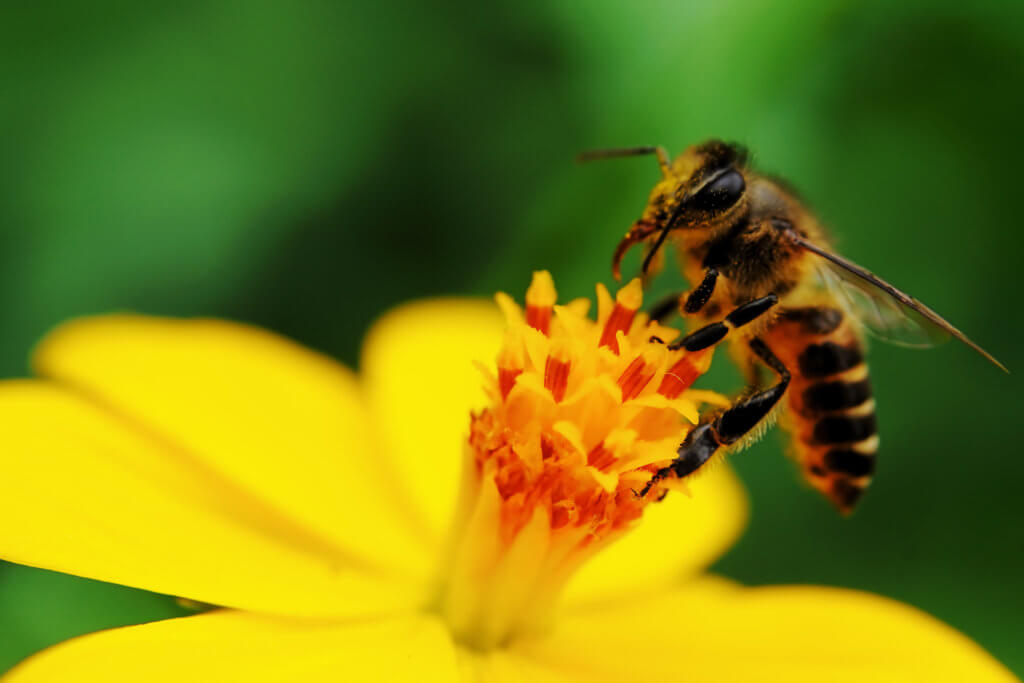
There are 10 general ways to attract bees to your garden:
- Plant Nectar-Rich plants – Nectar provides bees with sugar. This is their main source of energy. Without it, they cannot work or pollinate.
- Plant Pollen-Rich plants – Pollen provides bees with proteins and fats. Without these, they cannot live.
- Plant Native Species – Plant species that are native to where you and your bees live. The more recognizable a plant is to bees the more likely they are to visit it.
- Plant Non-Invasive Species – Don’t plant Invasive Species. They take over native and bee-friendly plants. This means fewer bees to pollinate your garden!
- Make a Bee-Bath – Provide a shallow plate at ground level near your garden. Add rocks. Add fresh water (don’t submerge the rocks). This will provide a valuable source of water for your bees.
- Build a Bee-Hive – Watch this great video on how to build a bee-hive: Beehiving.
- Location, Location, Location – Placing your Bee-Hive and Bee-Bath in the right location is essential. Place it is a sunny area that is not exposed to constant winds.
- Don’t use Pesticides – If you use pesticides on your property it will kill both plants that attract bees and bees themselves.
- Use Heirloom Plants – Look for plants or seeds that don’t contain neonicotinoids. If it has this it means it has been treated with pesticides that will repel or kill bees.
- Use Multi-Purpose Attractors – Find plants that will not only attract bees but also butterflies and hummingbirds. These are also great pollinators for your garden.
#3. How do you Make a Bee-Garden?
Making a Bee-Friendly Garden is easy.
Plant your garden as you normally would, but add any of the above 50 plants, trees, and flowers from above to your garden. This will lead to an increase in bees.
Or you can watch the below video to learn more about how to create a bee-friendly garden!
#4. What Plants Attract Bees & Hummingbirds?
Below, are plants that Attract Bees & Hummingbirds
#5. What Plants Attract Bees & Butterflies?
Plants That Attract Butterflies
What’s Next?
If you enjoyed this article then I recommend reading:
